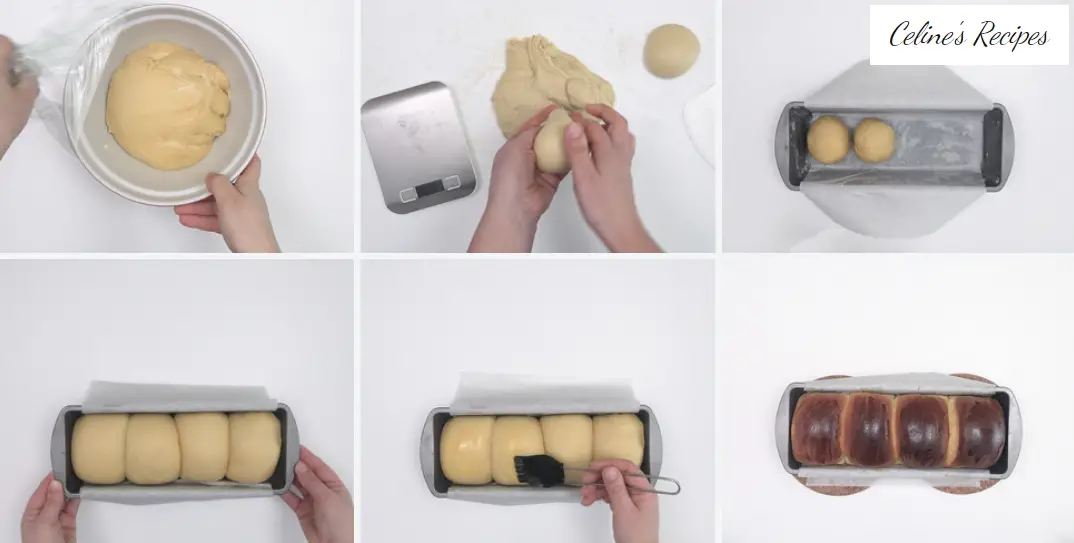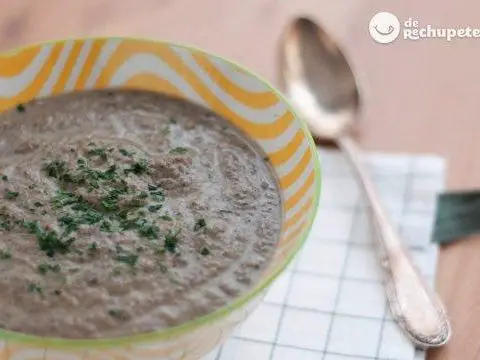
Info.
- Hard
- 300 minutes
- For 10 people
- 0.2 € / person
- 302kcal per 100g.
How to prepare a brioche .
Within the dessert recipes of the wonderful French pastry, there is a type of dough that is the basis for endless preparations.
Many of the buns we eat, homemade or not, have this type of dough as a starting point.
From the so our roscón de reyes , passing through the stuffed sedans , the brioches or Swiss , to the Italian panetone , they use a dough with a structure and preparation similar to that of the recipe that I bring you today, brioche bread .
There are many recipes for preparing a brioche or sweet bread. We can modify the proportion of butter, the fermentation times and the way of kneading. But the result must always be a super fluffy, moist and flavored crumb.
As proof that our dough is well treated we have the infallible fact that a good brioche will keep a perfect texture for several days. None of those buns that despite being tasty the day after their preparation already look like a stone.
The recipe for brioche bread that I will show you today will stay great for a few more days, well, that does last, of course, because I promise you it is absolutely delicious. And of course, if you have any doubts, you can prepare some delicious brioche French toast , which are bigger words.
This preparation has only one drawback, it is a dough that requires patience and care in its preparation. If you are in a hurry it will be better if you put on something else and leave this recipe for a day where you allow yourself to enjoy the process of seeing how this dough develops, with time and patience.
Before starting with the brioche
- In a cup slightly heat the milk and dilute the yeast in it. The milk must be warm, never a client, as this would render its effect useless.
- In a bowl we mix the flour, salt, sugar, eggs and dissolved yeast. We will leave without the butter, we will add it later.
- We knead the mixture by hand or by machine. If we choose the option of using an electric mixer, we must use the hook accessory.
- To use later, we cut the butter into small cubes and reserve it cold inside the fridge.
- We knead for about 5 minutes until we see that the ingredients have been integrated and we can start working on it.
- At this time we incorporate the butter directly from the fridge.
Kneaded brioche
- At first we will have a totally sticky dough and difficult to work, but little by little the butter will be absorbed and some flexibility will begin to appear in the dough.
- These moments will serve as a break if we have chosen to use our hands to work the dough.
- When the butter has been absorbed and incorporated into the rest of the ingredients, we continue kneading until we have a thin, shiny and elastic dough.
- This process can take about 20 or 25 minutes of machine kneading. It is important to rest the dough from time to time, the breaks will help in the kneading. If we have opted for a kneading by hand, we must arm ourselves with patience, the process will be longer. We will surely need 1.5 hours to achieve the optimum point of the dough.
- We will know that the dough is ready when we can stretch it until it is thin as a sheet without breaking.
- We form a ball with the dough and place it in a previously greased bowl. Cover with transparent paper and let it rest. At this point we have several options.




Brioche fermentation
- We can carry out a slow fermentation keeping the dough for a few hours in the fridge, between 8 and 10 hours. We can leave it overnight and continue the preparation the next day. This is the option that I have chosen.
- As a second option we can leave it to ferment at room temperature for 3 hours. You don’t need to double its volume. A perfect place would be the oven turned off and previously warm.
- If we have fermented the dough in cold, we must remove it from the fridge 1 hour before continuing with the process.
- After this time we dump the dough on a work surface and divide it into pieces of the size that we want. We work them into a ball. Depending on the type and size of the mold, we will need more or less pellets, several of which can be sized.
- In my case I have made 100 g balls. and I’ve baked two loaves. We place the balls in the mold, previously greased and lined, that we are going to use.
- We let them ferment for about 2 hours in a warm place. It would be a perfect place, the oven warm and off.
Baking and final presentation of brioche
- We paint the balls with beaten egg. With the oven previously hot, we bake the brioche for about 25 minutes, at 180º C. In the middle of the process it will be necessary to cover the brioche with aluminum foil to prevent it from toasting excessively.
- Both the temperature and the time will vary according to the size of the bread that we are making.
- If we prepare a larger or larger diameter bread, to ensure that the interior is well baked, it will be necessary to extend the baking time.
With a little work, yes, we can enjoy at home a top-notch brioche bread, one that lasts tender over the days and is totally delicious.
You can see all the step-by-step photos of the brioche bread recipe in this album. Do not miss any detail and it will be perfect.
Tips for a perfect brioche
- When we knead we must take into account the issue of the amount of liquid. Since it is a bit relative, I would say that it is indicative. Well, depending on the degree of absorption of the flour, more or less liquid will be necessary (we are talking about the egg).
- On the subject of yeast we have used for this recipe, fresh pressed yeast, but you can also use freeze-dried dry yeast, you just have to add it to the dough at the beginning of everything. In other brioche recipes I have also seen that sourdough can be used, for the measurements of this bun, it would be about 40 grams.
- On the one hand, I advise you to weigh the eggs and do not incorporate more than indicated. On the other hand that initially we sin of little liquid (eggs). We will always be on time to add 1 or 2 more tablespoons during the kneading process. In this case they are medium-sized eggs.
- We will know that the dough is ready when when stretched, it is so elastic that it almost becomes translucent without breaking, it will not stick to the hands or the work surface or the kneading bowl.
- In the case of this type of brioche bread I recommend balls of about 50 grams. But that will depend a little on the size of your mold and the type of presentation you want.






